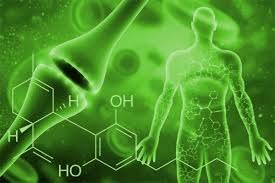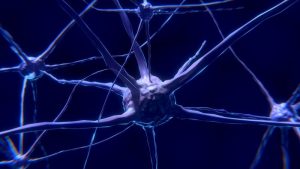Let’s take a look at the term “endocannabinoid.” The cannabinoid is derived from “cannabis” and “endo”, which is short for “endogenous,” which means it is naturally produced within your body. Endocannabinoid refers to cannabis-like substances found naturally within us.
The ECS is composed of three components:
- Endocannabinoids
- Receptors within your nervous system and around your body that cannabinoids and endocannabinoids bind with
- Enzymes to help reduce endocannabinoids or cannabinoids
The ECS is a vital part of our bodies and a natural part. There are many claims that marijuana has medicinal properties, including CBD and THC. You might be tempted to wonder if it’s all hype by people wanting the drug legalized. However, medical science supports many of these claims, and the cause for many of the widespread effects can be attributed to the scope and size of the endocannabinoid systems.
The Endocannabinoid System is Crucial for Homeostasis
Understanding the ECS is essential to appreciate its function fully.
Homeostasis refers to your body’s attempts to keep things in the right place. It works to maintain a stable internal environment that is optimal regardless of what happens in the external environment. Consider all the gauges on the dashboard of an airplane or car. These all inform the operator if things are operating in the correct zone.
Your body monitors important levels and functions like electronics in a plane or car. Are you adjusting your body temperature to the right level? Are your hormone levels as high or low as they should be? Are you beating too fast? Are you in need of fuel or rest? Are you concerned about too many chemicals building up in your bloodstream and inside your cells?
Your body activates your ECS when something is not operating in the correct range. When you feel hot and start to sweat, your ECS will help you cool down. Stomach growling? This is your ECS reminding you to eat because you need fuel.
Cannabinoid receptors do this in selected tissues. There are at least two types of cannabinoid receptors.
- CB1 is located in the central nervous (brain, nerves and spinal cord)
- CB2 is located in the peripheral nervous (nerves in your extremities), digestive system and specialized cells of the immune system
Researchers believe that cannabinoid receptors are abundant in our central nervous systems. However, some researchers suggest that there could be a third, yet undiscovered, one.
The ECS regulates many important functions through these receptors.
- Appetite
- Digestion
- Immune function
- Inflammation, including neuroinflammation
- Mood
- Sleep
- Reproduction/fertility
- Motor control
- Temperature regulation
- Memory
- Pain
- Pleasure/reward
Your body activates the ECS with precision, so it only does what it has to. It will regulate your hormones if they are out of balance. This can be a problem with your digestive system or immune system.
Once the endocannabinoids are done with their work and have balanced everything, enzymes are created to break down the enzymes and stop them from going too far. It is a very precise response.
This is different from someone who smokes pot and floods their body with cannabinoids. This drug can have wide-ranging effects on physiology. Some of these may be beneficial, while some may be detrimental.
The ECS is vital to our survival and health. If it isn’t functioning properly, it could cause many problems.
There are many potential treatments for cannabis products that can stimulate the ECS. A lot of research is being done around the globe. There are also synthetically (lab-created) medications and cannabinoids such as the drug Nabilone.
Already, there is a lot of research being done on cannabinoid-based therapies. We will likely see more as we learn more about the system and its substances. Changes in legal status have also driven research.
The Role of Enzymes and Receptors
A cannabinoid in marijuana gives people a high when they smoke it. This cannabinoid is called THC, which is short for delta-9-tetrahydrocannabinol. Anandamide is one of your endocannabinoids, which attaches to the same receptor.
Anandamide and THC are very similar. However, it doesn’t give you the same high as THC. Anandamide has a calming effect, though. It gets its name from Ananda, the Sanskrit term for bliss.
FAAH enzyme is what makes anandamide and THC so different. FAAH is responsible for breaking down anandamide as well as other endocannabinoids. FAAH works fast on the ones that your body makes, but it cannot break down THC. This means THC stays around longer, which gives it a greater effect.
Cannabinoids and endocannabinoids act as neurotransmitters in the brain. They are chemical messengers that transmit information from one body cell to another. There are many different effects that neurotransmitters can have because they interact with different receptors.
Cannabidiol, or CBD, is a plant-based cannabinoid that has received much attention from researchers. CBD doesn’t contain any psychoactive effects, so it has no high levels of THC. CBD is known to have a function in the brain that stops the FAAH enzyme from breaking down anandamide. This allows the anandamide to have a greater impact. This is why CBD may be able to treat anxiety disorders.
Endocannabinoid Deficiency
Medical science has discovered more about the ECS and several conditions that may be linked to the dysregulation of this system. This condition is known as clinical endocannabinoid deficiencies (CECD). CECD isn’t a disease but an umbrella term that encompasses conditions that share this common feature.
There are several conditions in which CECD might be relevant:
- Fibromyalgia
- Migraine
- Irritable bowel syndrome
These conditions are known as “functional conditions” and “central sensitivity syndromes.” These conditions are resistant to many treatments, so researchers are exploring cannabis-based therapies.
These conditions often involve multiple systems, making sense when considering the ECS-influenced areas.
Fibromyalgia, for example, affects the central and peripheral nervous system, immune system, and endocrine system (hormonal). It has been linked to early hysterectomy, premature perimenopause and problems with conception. Poor memory and temperature sensitivity are two common symptoms.
This seems like many problems until you consider homeostasis or the ECS.
Although we are still in the early stages of finding the solution to endocannabinoid deficiencies, the patient community has widely accepted the growing availability of CBD and medical marijuana. We will likely see more research in this area.
Potential Treatment
Cannabinoids have been studied as possible treatments for many conditions.
They are currently researching for:
- Alzheimer’s disease
- Cardiovascular disease
- Neurological, neurodegenerative and neurodevelopmental illnesses.
- Chronic and acute kidney disease
- Autoimmune diseases
- Chronic inflammatory disease
- Chronic pain conditions
Already, CBD is being used for epilepsy in children, pain, inflammation and acne, and other conditions.
A word from Verywell
Cannabinoids like CBD oil and marijuana seem to have a lot of potential as treatment options for many ailments. Be aware that even natural treatments can have unwanted side effects. Self-treatment can put your health at serious risk. Make sure you consult your healthcare provider before making any decisions.
The legalization of marijuana is different from one state to the next. To protect yourself, make sure you are familiar with your local laws. The 2018 Farm Bill, which Congress passed in December 2018, will likely be signed into law. It will legalize cannabis products at the federal level, but not hemp. It is still worth knowing the laws in your area regarding CBD. ProCon.org provides information on which states have CBD oil laws. The website Governing provides a map showing where marijuana is legal.
Good news! Legalizing hemp products will open up new treatment options for many people. It could also speed up medical research and eventually lower prices.



